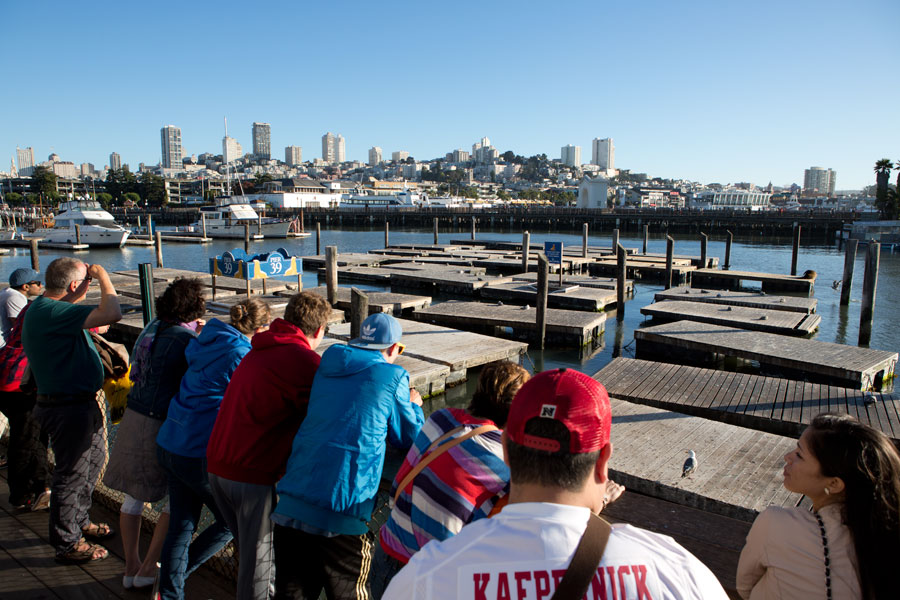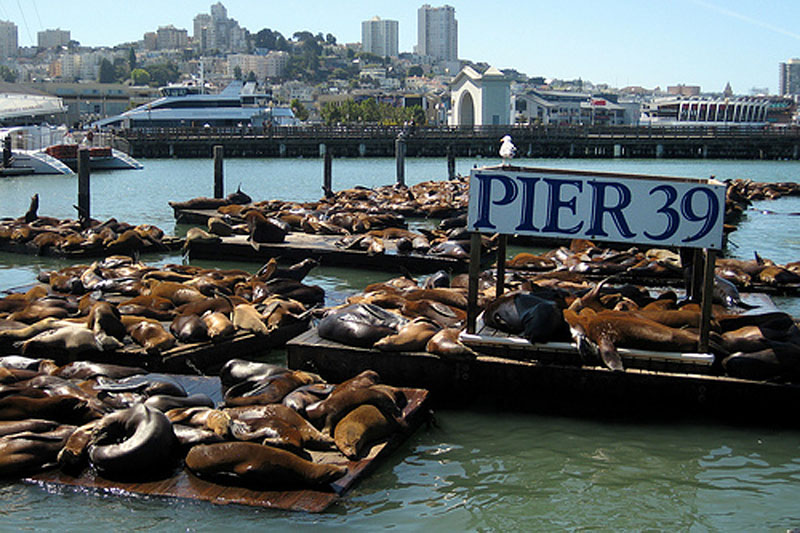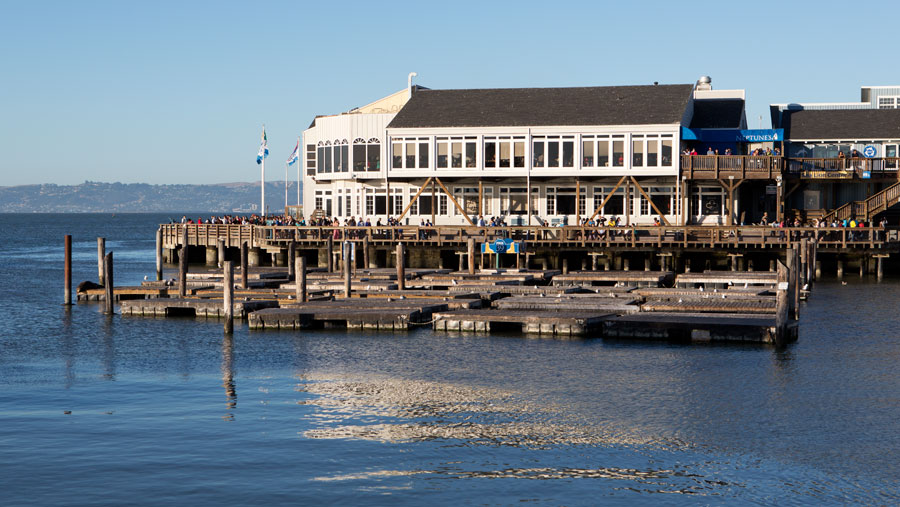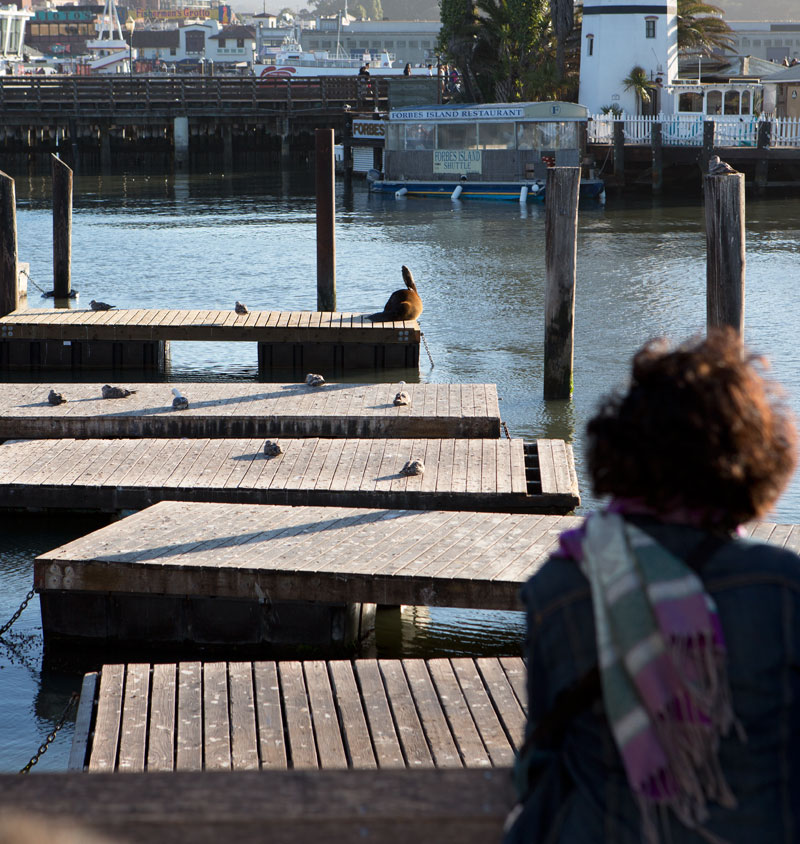One of the lead news stories in northern California this week was on the dozens of sea lions which live at San Francisco’s Fisherman’s Wharf have suddenly disappeared. The large animals are a large tourist attraction in the area, and after being here all year, they suddenly left the area and headed off to sea.
Where did they go? Was it is sign of pollution, global warming, an impending earthquake? As it turns out, there’s really nothing unusual about it.
The lions arrive
In February 1990, the first dozen sea lions began hanging around a dock near Fisherman’s Wharf, and merchants and marina officials were delighted with the rowdy, all-male herd. They played in the water most of the day and sunned themselves on one of Pier 39’s six boat docks, and quickly became immensely popular with tourists, many who had avoided the area’s shops and restaurants since the big October 17 earthquake. Some of the five Pier 39 restaurants he oversees saw a business increase 20% to 40% since the sea lions arrived. As one local business owner commented, “A natural phenomenon took all of our business away and a natural phenomenon brought it back”. It was a novelty that tourists and business owners alike seemed to enjoy.
“They’re unbelievable,” said Janice Flanagan, who saw the sea lions on television at her home in Fort Scott, Kan., and immediately made travel plans for San Francisco. “This is the chance of a lifetime.”
Among locals, however, the sea lions eventual wore out their welcome, however. The word got out in the sea lion community, and the first dozen or so sea lions were joined by as many as 300 more of the 700-pound animals (with as many as 1,700 have been officially reported at one time). They chased away boaters from the premium San Francisco dock space and defecated, urinated and regurgitated all over the dock each day. They caused damage to the docks and $2 million pier, and one resident who lived a mile away on Telegraph Hill threatened to sue the pier owners because of the nighttime bellowing by the sea lions. Yet they were still a major draw for the area – one which became a major attraction in itself.
Sea lions invading man’s space isn’t unique to San Francisco, of course. Similar incidents have occurred regularly in Monterey, Seattle, and other locations along the west coast.
It’s just temporary – or is it?
One biologist from the Los Angeles office of the National Maritime Fisheries Service studied the pinniped invasion in 1990, and advised that that two factors – hunger and the mating season – would soon solve the dock’s dilemma.
At that time, it was speculated that most of the sea lions would soon follow the herring migration out of the bay within a few weeks, and those that were left would soon follow their biological clocks and leave for the mating season near the Channel Islands, off the coast from Ventura and Santa Barbara.
Many did. But they also came back.
24 years later, the sea lions are still here. Until last week.
Just last week, the sea lions were out relaxing in the sun, posing for photos, and entertaining tourists – and then they suddenly disappeared in what’s been called “The Great 2014 Sea Lion Disappearance”. The docks are eerily silent once again, the tourist crowds are small, and there’s just one single sea lion to entertain thousands of visitors each day.
But it’s nothing to be alarmed with, say biologists, and they almost certainly be back. There are several possibilities for their sudden disappearance.
The early summer months are when sea lions naturally migrate, most of them heading south to the Channel Islands off the Southern California coast to rear their young – populations of over 70,000 California sea lions, 5,000 northern fur seals, 50,000 northern elephant seals and 1,100 harbor seals breed and pup on the island each year. They’re drawn here, in part, due to an upwelling that sucks cold nutrient-rich water that normally lies at the bottom of the ocean to the surface, providing food for the thousands of animals. It’s also an isolated location, where they can have a beach all to themselves with no disturbance from people
There is also the possibility that they headed out into the ocean to pursue their favorite food – herring. They need a lot of them to survive – food requirements of adult sea lions are believed to be between 7% of their body weight per day, while juveniles require about 14%. For a 700-point sea lion, that adds up to 50-100 pounds of herring (and other fish) per day each. Food is a strong drive of behavior for all animals.
It’s been speculated that there could have also been a natural or manmade disturbance, such as construction, which disturbed them. And while it may sound far-fetched, animals have also proven to be able to be disturbed by natural disasters such as earthquakes. One geologist, Jim Berkland, said he saw an increasing number of missing pets documented in the local classified ads which helped him to predict the destructive San Francisco earthquake of 1989. The theory is that the animals are fleeing the impending quake, based on signals they are able to detect.
But nobody seems to know exactly why, or why they all left at once. Based on their track record over two decades, however, there’s almost no doubt they’ll be back soon.
They’ll be back
When they disappeared in December 2009, also with little explanation, the animals were back three months later, and that’s almost definitely the forecast this time as well. In the meantime, tourists will need to spend their time being entertained by streetside rappers, spray paint artists, and the mechanical men who perform on the sidewalks. And, of course, the one sea lion who remains on watch on the dock.
Additional Resources:
Click here to see a live webcam of the sea lions at Pier 39 in San Francisco






